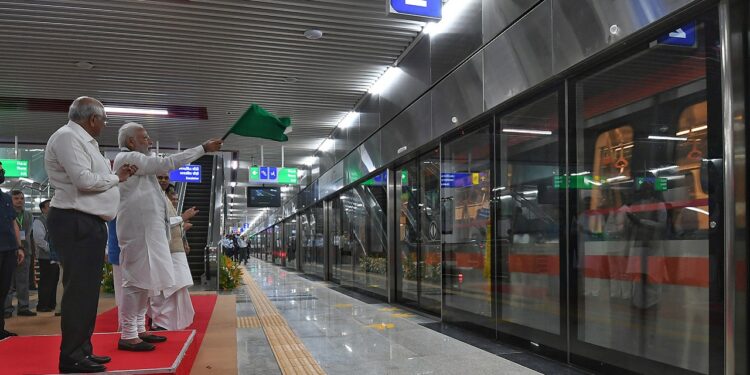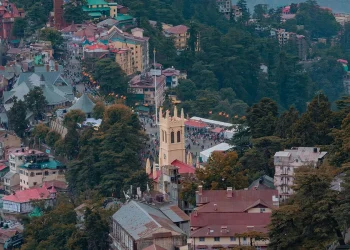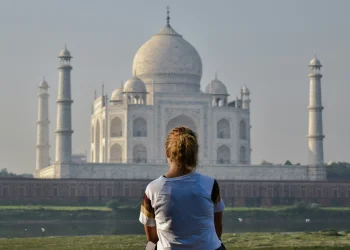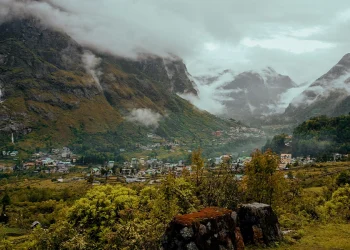Delhi: Prime Minister Narendra Modi inaugurated Phase-I of Ahmedabad Metro project at a public function at the Ahmedabad Education Society in Ahmedabad. Prime Minister also flagged off the Ahmedabad Metro rail project and took a metro ride from Kalupur station to Doordarshan Kendra metro station. The Prime Minister flagged off Gandhinagar- Mumbai Vande Bharat Express at Gandhinagar station and travelled on the train from there to Kalupur Railway Station today.
Addressing the gathering, the Prime Minister said that today is a big day for India of 21st century, urban connectivity and Aatmnirbhar Bharat. He expressed his delight in the ride that he undertook in Vande Bharat Train and Ahmedabad Metro.
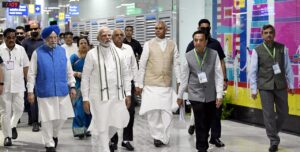
Prime Minister praised the sound-proofing inside the Vande Bharat Express where the sound was reduced to a hundredth when compared to what is experienced inside an airline. On a personal note, the Prime Minister thanked the people of Ahmedabad for a huge turnout and in a light-hearted manner, recounted the wisdom and calculation of Ahmedabad commuters. “I can not salute Ahmedabad enough, today, Ahmedabad has won my heart”, a visibly moved Prime Minister said.
PM remarked that India of the 21st century is going to get new momentum from the cities of the country. “With the changing times, it is necessary to continuously modernise our cities with the changing needs”, Shri Modi said. He pointed out that the system of transport in the city should be modern and should have seamless connectivity where one mode of transport supports the other.
Also read: Vice President Jagdeep Dhankhar Presents National Tourism Awards
In pursuant to this thinking huge investment is being made in the urban infrastructure. In the last 8 years, in more than two dozen cities either Metro has started or work is in an advanced stage. Dozens of smaller cities have been connected via air connectivity and UDAN scheme. Similarly, Railways stations are undergoing transformation.
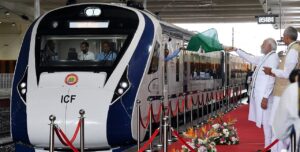
“Today, Gandhinagar Railway Station is no less than any airport in the world”, he said. He also mentioned the government’s decision to modernise Ahmedabad Railway Station.
Talking about the Vande Bharat Express, the Prime Minister pointed out that the journey between the two big cities of Ahmedabad and Mumbai will become comfortable while also reduce the distance. The Prime Minister further added that an express train takes roughly seven to eight hours to complete the journey from Ahmedabad to Mumbai, whereas a Shatabdi train takes six and half to seven hours.
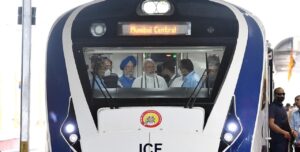
On the other hand, the Vande Bharat Express will take a maximum of five and a half hours to complete the journey from Gandhinagar to Mumbai, the Prime Minister remarked. The Prime Minister also highlighted that Vande Bharat Express can accommodate more passengers than other trains.
The Prime Minister also recounted his interaction with the technicians and engineers who designed and made the Vande Bharat Coaches and expressed his admiration for their initiative and confidence. Recalling his conversation on Kashi Railway Station when the Prime Minister was informed about the rush for availability in Vande Bharat Express, the Prime Minister said that it was the go-to train for the labourers and the poor due to the increased luggage room and reduced travel time.
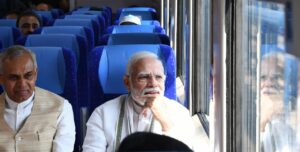
“This is the power of Vande Bharat”, Shri Modi added. The Prime Minister also explained that due to ‘double-engine government’ clearances and other permissions for the metro projects were obtained very quickly for fast completion of the project. Route planning for Metro was done while keeping the needs of the poor and needy in mind. Kalupur is getting a multi-modal hub, he said.
Chief Minister of Gujarat, Bhupendra Patel, Governor of Gujarat, Acharya Devvrat, Union Minister of Railways, Ashvini Vaishnav, Union Minister of Housing and Urban Affairs, Hardeep Singh Puri, Member of Parliament, C R Patil, Union Minister of State for Railways Darshana Vikram Jardosh and Mayor of Ahmedabad, Kirit Parmar were those present on the occasion.
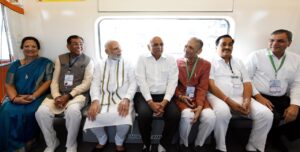
Vande Bharat Express
The Vande Bharat Express offers a myriad of superior and aircraft-like traveling experiences. It is equipped with advanced state-of-the-art safety features including an indigenously developed Train Collision Avoidance System – KAVACH. There are reclining seats in all classes while the Executive Coaches have the added feature of 180-degree rotating seats. Every coach is equipped with 32” screens providing passenger information and infotainment.
Ahmedabad Metro Project
Phase-I of Ahmedabad Metro project comprises about 32 km of the East-West corridor from Apparel park to Thaltej and the North-South corridor between Motera to Gyaspur. The Thaltej-Vastral route in the East-West corridor has 17 stations. This corridor also has a 6.6 km underground section with four stations. The 19 km North-South corridor that connects Gyaspur to Motera Stadium has 15 stations.
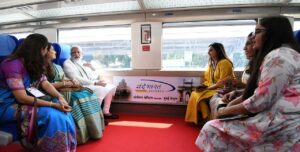
The entire Phase 1 project is built at a cost of more than ₹12,900 crores. Ahmedabad Metro is a massive state of art infrastructure project involving underground tunnels, viaducts & bridges, elevated and underground station buildings, ballastless rail tracks and driverless train operation compliant rolling stock etc.
Also read: Public Participation Can Revolutionise Tourism In The Country
The metro train set is equipped with an energy-efficient propulsion system which can save about 30-35% of energy consumption. The train has a state of art suspension system providing a very smooth riding experience to passengers. Inauguration of Ahmedabad Phase-1 metro project will provide world-class multi-modal connectivity to the people of the city.
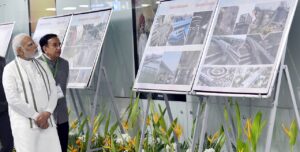
Multi-Modal connectivity is being provided with the Indian Railways, and Bus system (BRTS, GSRTC and City Bus service). This includes connectivity with BRTS at Ranip, Vadaj, AEC station etc. and with Indian Railways at Gandhidham, Kalupur and Sabarmati station. At Kalupur, the metro line will be connected to the High-Speed Rail system connecting Mumbai and Ahmedabad.
The inauguration and foundation stone of these wide-ranging developmental projects reflect the commitment of the Prime Minister to develop world-class infrastructure, enhance urban mobility and improve multi-modal connectivity. It also showcases the continuous focus of his government on enhancing the ease of living of the common man.

Founded in 2016, The Traveller Trails is a print and digital magazine and a trusted source for current news, trends, analysis, opinions, interesting blogs, videos and exclusive interviews from every corner of the world.



